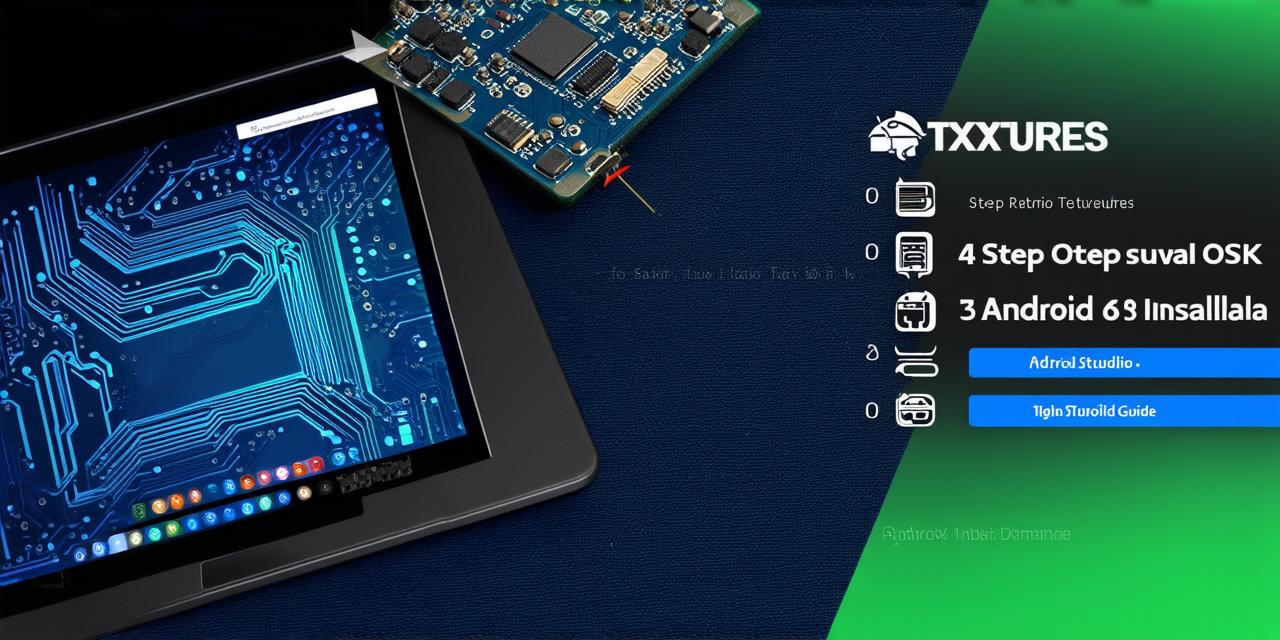How to Install the Android SDK for Android Studio: A Step-by-Step Guide
If you’re an Android Studio developer, having access to the Android Software Development Kit (SDK) is essential for creating and testing Android apps. In this guide, we will walk you through a step-by-step process on how to install the Android SDK on your computer so that you can start developing right away.
Step 1: Check Your System Requirements
Before installing the Android SDK, it’s important to check whether your computer meets the system requirements for the latest version of the Android Studio. You can find these requirements on the Android Developer website [1]. It’s recommended that you have at least 2GB of RAM and a 64-bit processor to run Android Studio smoothly.
Step 2: Download the Latest Version of the Android SDK
You can download the latest version of the Android SDK from the Android Developer website [1]. Make sure you select the appropriate operating system for your computer (Windows, macOS, or Linux). Once you’ve downloaded the installer, double-click on it to start the installation process.
Step 3: Install the Android SDK Components
The Android SDK is made up of several components that you can choose to install individually or as a complete package. Some of the most commonly used components include the Android Debug Bridge (ADB), Android Studio, and Android Virtual Machine (VM). It’s recommended that you install all of these components, but you can select only those that you need based on your project requirements.

Step 4: Configure Your Environment Variables
After installing the Android SDK components, you need to configure your environment variables to ensure that Android Studio can find the necessary tools and libraries. You can do this by following these steps:
- Open the Start menu (Windows) or Finder (macOS/Linux) and search for “Environment Variables”.
- Click on “Edit the system environment variables”.
- In the “System Properties” window, click on the “Environment Variables” button.
- In the “System Variables” section, scroll down until you find the “Path” variable.
- Click “Edit”.
- Add the following path: `C:Program Files (x86)Androidsdktools`. If you’re using a 32-bit version of Android Studio, use `C:Program FilesAndroidsdktools` instead.
- Click “OK” to save your changes.
Step 5: Verify Your Installation
To verify that the Android SDK has been successfully installed, open a command prompt (Windows) or terminal (macOS/Linux) and run the following command:
android version
If you see the version number of the Android SDK, then your installation was successful. You can also check if ADB is properly configured by running the following command in a separate command prompt:
javascript
adb devices
If you see your device connected to the computer, then ADB is working correctly.
Step 6: Install Additional Tools and SDKs
In addition to the Android SDK, there are several other tools and SDKs that you may need to install depending on your project requirements. Some of the most commonly used tools and SDKs include:
- Android NDK (Native Development Kit): This is a set of tools and libraries that allow you to write parts of your app in native code, such as C or C++.
- Google Play Services: These are a set of libraries and APIs that provide additional functionality to your app, such as access to Google Maps or authentication with Google services.
- Firebase: This is a mobile development platform that provides tools and services for building real-time, data-driven apps.
- Android Studio Templates: These are pre-built templates that you can use to quickly create common app elements, such as buttons or layouts.
You can find instructions on how to install these tools and SDKs on the Android Developer website [1].
Step 7: Start Developing Your App
Now that you have installed the Android SDK and any additional tools and SDKs you need, you can start developing your app. To do this, open Android Studio and create a new project by clicking on “Start a new Android Studio project” in the welcome screen. From there, you can select your project settings, such as the minimum SDK version and the target device.
Step 8: Publish Your App
When you are ready to publish your app, follow these steps:
- Connect your device to your computer using a USB cable.
- In Android Studio, go to "Build" -> "Generate Signed Bundle/APK".
- Select the appropriate signing configuration and enter your keystore information.
- Build your app by clicking on "Run" -> "Run ‘app’" or pressing F5.
- Wait for your app to build and install on your device.
- Once your app is installed, go to the Google Play Store and sign in with your Google account.
- Click on "My apps" and then "Publish".
- Follow the prompts to fill out the necessary information and upload your signed APK file.
Summary
In this guide, we took you through a step-by-step process on how to install the Android SDK and other tools and SDKs needed for developing apps using Android Studio. By following these steps, you can start creating and testing your own Android apps right away.
